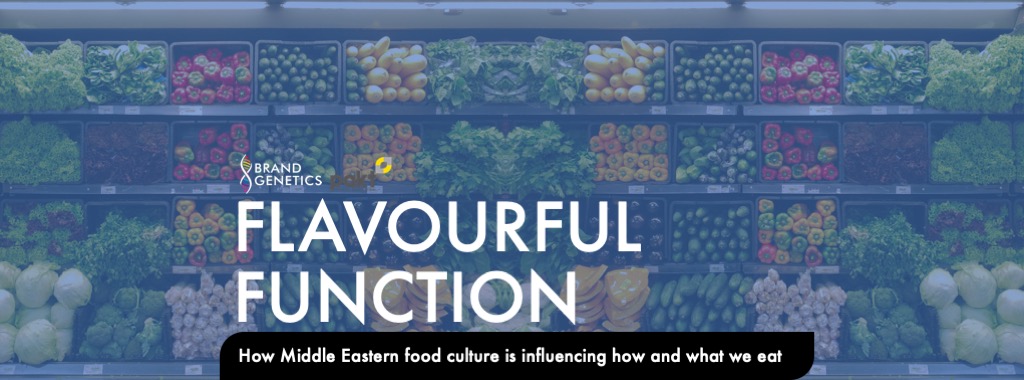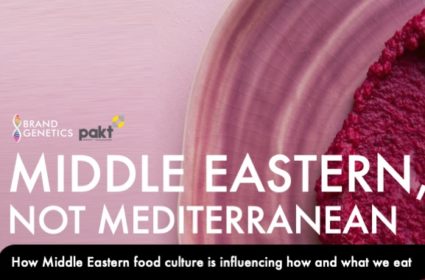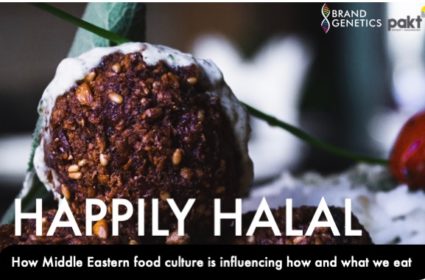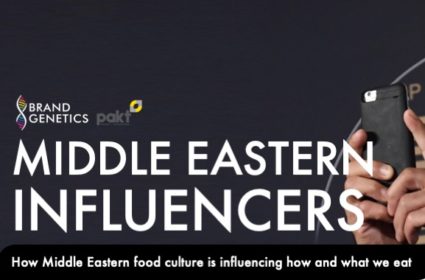Flavourful Function

This article is part of our series on Market Insight: Middle Eastern food. You can view the full series or download the report.
Download ReportThis week we explore the final trend from our Middle Eastern food report [download here]. The report provides a cross-cultural viewpoint as to how this Middle Eastern influence is growing and identifies 5 key trends set to shape the future of global food culture and what this means for brands and their managers.
Our fifth trend tracks the rise of functional flavours, designed to take food beyond flavour and into territories such as self-care, self-improvement or emotion regulation. Ultimately, Middle Eastern cuisine is increasingly influencing not just what, but also how we eat. While its dishes and tastes are becoming more widespread in the Western world, evidence suggests this is just the beginning!
Week 5: Flavourful Function
Some have said that there are only two things humans truly seek – food and sex! So, with the world having less sex, the rise of new food experiences should come as no big surprise!
More than ever, Westerners are searching for food and drink that goes beyond just basic nutrition and provides functional benefits too. A recent Mintel report identifies that 51% of consumers are willing to try an unfamiliar ingredient if it provides a functional benefit. Consumers are using food to manage health, mood and overall wellbeing, and this has opened the door to new flavours, ingredients and different styles of cooking.
Specifically, the growing demand for ‘superfood’ alternatives has put a spotlight on Middle Eastern cuisine where food is commonly treated as a source of health, power, beauty and even potency. From harnessing the qualities of certain spices and ingredients, to following specific rituals of food preparation, the Middle East is teaching the world how to make food more than just fuel.
Superfoods such as turmeric, sumac, Urfa peppers, kefir, labneh and pistachios are at the forefront of the global wellness trend. Western products are increasingly utilising these ingredients as better, more natural sources of nutrition, that help contribute towards a long and healthy life.
So What?
Competition is no longer purely on flavour and managers must look to take their brands beyond simply satisfying hunger. For example, by looking to traditional Middle Eastern ingredients, recipes and rituals you can help deliver greater wellbeing and ultimately improve your customers’ lives far beyond the dinner table.
Brand example: The Collective Dairy
What does a New Zealand dairy brand have to teach us about implementing Middle Eastern food trends? Founded by Angus Allan and Ofer Shenhav, The Collective disrupted the dairy category becoming NZ’s best-selling gourmet yogurt within 6 months of launching.
In a previously flavour-focused category, The Collective helped pioneer the rise of health positionings, and it was their willingness to globalise the Middle Eastern trend that set them apart.
Being the first to launch a mainstream Kefir in NZ back in 2013, focusing on the gut health benefits across all their comms helped turbocharge their growth. Clearly a successful tactic as, since then, 94% of global kefir launches used some kind of health positioning (Innova Market insight 2017).
Ultimately, The Collective continues to prove the demand for Eastern flavours in the West, by adding a twist to this traditional drink by focusing on the functional elements.
Download your copy of the report now and if you are interested in how to find the human future of the food market, please get in touch.




